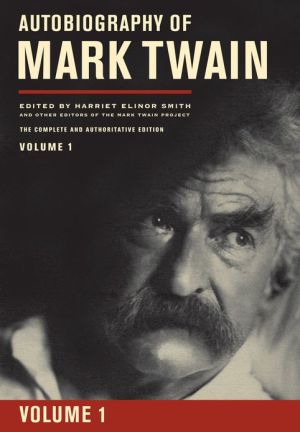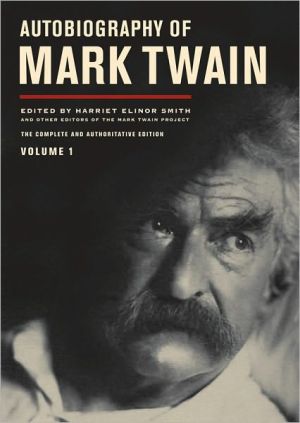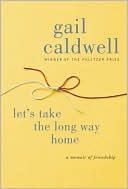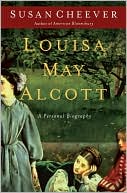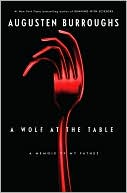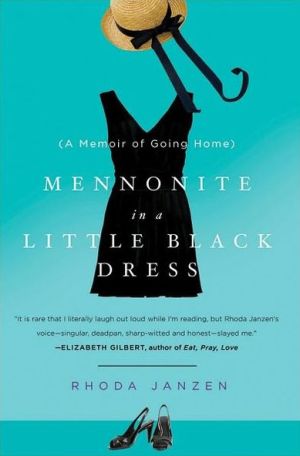Autobiography of Mark Twain: The Complete and Authoritative Edition, Volume 1
"I've struck it!" Mark Twain wrote in a 1904 letter to a friend. "And I will give it away—to you. You will never know how much enjoyment you have lost until you get to dictating your autobiography." Thus, after dozens of false starts and hundreds of pages, Twain embarked on his "Final (and Right) Plan" for telling the story of his life. His innovative notion—to "talk only about the thing which interests you for the moment"—meant that his thoughts could range freely. The strict instruction...
Search in google:
"Mark Twain dictated much of this book—now it is a book at last—from a big rumpled bed. Reading it is a bit like climbing in there with him."—Roy Blount, Jr."To say that the editors have done an extremely good job is a little like saying the ceiling of the Sistine Chapel does a good job of keeping the rain off the Pope's head. It is true but it doesn't give even a whiff of the grandeur of the thing."—Robert D. Richardson, author of Emerson: The Mind on Fire"Mark Twain, always so blithely ahead of his time, has just outdone himself: he's brought us an Autobiography from beyond the grave: a hundred-year-old relic that yet manages to accomplish something new. It anticipates the Cubism just taking form in Samuel Clemens's last years, by exploding the confines of orderliness, sequence, the dutiful march of this-then-that. In so doing, it gives us not simply Mark Twain's life—that is the prosaic work of biographers—but the ways in which he thought of his life: in all the fragmented recollection, distraction, creation, revision and dreaming that make up the true, divinely jumbled devices we all use to recapture experience and feeling. If this prodigious and prodigal pastiche were a machine, it would be the Paige typesetter—except that it works."—Ron Powers, author of Mark Twain: A Life Publishers Weekly Mark Twain is his own greatest character in this brilliant self-portrait, the first of three volumes collected by the Mark Twain Project on the centenary of the author's death. It is published complete and unexpurgated for the first time. (Twain wanted his more scalding opinions suppressed until long after his death.) Eschewing chronology and organization, Twain simply meanders from observation to anecdote and between past and present. There are gorgeous reminiscences from his youth of landscapes, rural idylls, and Tom Sawyeresque japes; acid-etched profiles of friends and enemies, from his "fiendish" Florentine landlady to the fatuous and "grotesque" Rockefellers; a searing polemic on a 1906 American massacre of Filipino insurgents; a hilarious screed against a hapless editor who dared tweak his prose; and countless tales of the author's own bamboozlement, unto bankruptcy, by publishers, business partners, doctors, miscellaneous moochers; he was even outsmarted by a wild turkey. Laced with Twain's unique blend of humor and vitriol, the haphazard narrative is engrossing, hugely funny, and deeply revealing of its author's mind. His is a world where every piety conceals fraud and every arcadia a trace of violence; he relishes the human comedy and reveres true nobility, yet as he tolls the bell for friends and family--most tenderly in an elegy for his daughter Susy, who died in her early 20s of meningitis--he feels that life is a pointless charade. Twain's memoirs are a pointillist masterpiece from which his vision of America--half paradise, half swindle--emerges with indelible force. 66 photos and line illus. (Nov.)
I was born the 30th of November, 1835, in the almost invisible village of Florida, Monroe County, Missouri. My parents removed to Missouri in the early 'thirties; I do not remember just when, for I was not born then and cared nothing for such things. It was a long journey in those days and must have been a rough and tiresome one. The village contained a hundred people and I increased the population by I per cent. It is more than many of the best men in history could have done for a town. It may not be modest in me to refer to this but it is true. There is no record of a person doing as much-not even Shakespeare. But I did it for Florida and it shows that I could have done it for any place-even London, I suppose.\ Recently some one in Missouri has sent me a picture of the house I was born in. Heretofore I have always stated that it was a palace but I shall be more guarded now.\ The village had two streets, each a couple of hundred yards long; the rest of the avenues mere lanes, with railfences and comfields on either side. Both the streets and the lanes were paved with the same material-tough black mud in wet times, deep dust in dry.\ Most of the houses were of logs--all of them, indeed, except three or four; these latter were frame ones. There were none of brick and none of stone. There was a log church, with a puncheon floor and slab benches. A puncheon floor is made of logs whose upper surfaces have been chipped flat with the adz. The cracks between the logs were not filled; there was no carpet; consequently, if you dropped anything smaller than a peach it was likely to go through. The church was perched upon short sections of logs, which elevated it two orthree feet from the ground. Hogs slept under there, and whenever the dogs got after them during services the minister had to wait till the disturbance was over. In winter there was always a refreshing breeze up through the puncheon floor; in summer there were fleas enough for all.\ A slab bench is made of the outside cut of a saw-log, with the bark side down: it is supported on four sticks driven into auger holes at the ends; it has no back and no cushions. The church was twilighted with yellow tallow candles in tin sconces hung against the walls. Week days, the church was a schoolhouse.\ There were two stores in the village. My uncle, John A. Quarles, was proprietor of one of them. It was a very small establishment, with a few rolls of "bit" calicoes on half a dozen shelves; a few barrels of salt mackerel, coffee and New Orleans sugar behind the counter; stacks of brooms, shovels, axes, hoes, rakes and such things here and there; a lot of cheap hats, bonnets and tinware strung on strings and suspended from the walls; and at the other end of the room was another counter with bags of shot on it, a cheese or two and a keg of powder; in front of it a row of nail kegs and a few pigs of lead, and behind it a barrel or two of New Orleans molasses and native corn whisky on tap. If a boy bought five or ten cents' worth of anything he was entitled to half a handful of sugar from the barrel; if a woman bought a few yards of calico she was entitled to a spool of thread in addition to the usual gratis "trimmin's"; if a man bought a trifle he was at liberty to draw and swallow as big a drink of whisky as he wanted.\ Everything was cheap: apples, peaches, sweet potatoes, Irish potatoes and corn, ten cents a bushel; chickens, ten cents apiece; butter, six cents a pound; eggs, three cents a dozen; coffee and sugar, five cents a pound; whisky, ten cents a gallon. I do not know how prices are out there in interior Missouri now but I know what they are here in Hartford, Connecticut.' To wit: apples, three dollars a bushel; peaches, five dollars; Irish potatoes (choice Bermudas), five dollars; chickens, a dollar to a dollar and a half apiece, according to weight; butter, forty-five to sixty cents a pound; eggs, fifty to sixty cents a dozen; coffee, forty-five cents a pound; native whisky, four or five dollars a gallon, I believe, but I can only be certain concerning the sort which 1 use myself, which is Scotch and costs ten dollars a gallon when you take two gallons--more when you take less.\ Thirty to forty years ago, out yonder in Missouri, the ordinary cigar cost thirty cents a hundred, but most people did not try to afford them, since smoking a pipe cost nothing in that tobaccogrowing country. Connecticut is also given up to tobacco raising, to-day, yet we pay ten dollars a hundred for Connecticut cigars and fifteen to twenty-five dollars a hundred for the imported article.\ At first my father owned slaves but by and by he sold them and hired others by the year from the farmers. For a girl of fifteen he paid twelve dollars a year and gave her two tinsey-woolsey frocks and a pair of "stogy" shoes-cost, a modification of nothing; for a negro woman of twenty-five, as general house servant, he paid twenty-five dollars a year and gave her shoes and the aforementioned linsey-woolsey frocks; for a strong negro woman of forty, as cook, washer, etc., he paid forty dollars a year and the customary two suits of clothes; and for an able-bodied man he paid from seventy-five to a hundred dollars a year and gave him two suits of jeans and two pairs of "stogy" shoes--an outfit that cost about three dollars.
\ Publishers WeeklyMark Twain is his own greatest character in this brilliant self-portrait, the first of three volumes collected by the Mark Twain Project on the centenary of the author's death. It is published complete and unexpurgated for the first time. (Twain wanted his more scalding opinions suppressed until long after his death.) Eschewing chronology and organization, Twain simply meanders from observation to anecdote and between past and present. There are gorgeous reminiscences from his youth of landscapes, rural idylls, and Tom Sawyeresque japes; acid-etched profiles of friends and enemies, from his "fiendish" Florentine landlady to the fatuous and "grotesque" Rockefellers; a searing polemic on a 1906 American massacre of Filipino insurgents; a hilarious screed against a hapless editor who dared tweak his prose; and countless tales of the author's own bamboozlement, unto bankruptcy, by publishers, business partners, doctors, miscellaneous moochers; he was even outsmarted by a wild turkey. Laced with Twain's unique blend of humor and vitriol, the haphazard narrative is engrossing, hugely funny, and deeply revealing of its author's mind. His is a world where every piety conceals fraud and every arcadia a trace of violence; he relishes the human comedy and reveres true nobility, yet as he tolls the bell for friends and family--most tenderly in an elegy for his daughter Susy, who died in her early 20s of meningitis--he feels that life is a pointless charade. Twain's memoirs are a pointillist masterpiece from which his vision of America--half paradise, half swindle--emerges with indelible force. 66 photos and line illus. (Nov.)\ \ \ \ \ From the Publisher"Sometimes the autobiography seems Twain's letter to posterity. At other times, reading it feels like eavesdropping on a conversation he is having with himself. . . . This first installment of Twain's autobiography brings us closer to all of him than we have ever come before."—New York Review of Books\ "Dip into the first enormous volume of Twain's autobiography that he had decreed should not appear until 100 years after his death. And Twain will begin to seem strange again, alluring and still astonishing, but less sure-footed, and at times both puzzled and puzzling in ways that still resonate with us, though not the ways we might expect."—New York Times\ "This is a book for dipping, not plunging. Read, as Twain might put it, until interest pales, and then jump. It feels like a form of time travel."—New York Times/The Opinion Pages\ "Twain generously provides the 21st century aficionado a marvelous read. His crystalline humor and expansive range are a continuous source of delight and awe. . . . [He] has given us 'an astonishment' in his autobiography with his final, beautifully unorganized genius and intemperate thoughts. Pull up a chair and revel."—Los Angeles Times Book Review\ "Promises a no-holds barred perspective on Twain's life, and will be rich with rambunctious, uncompromising opinions."—Herald Scotland\ \ \ \ Library JournalBefore his death in 1910, Mark Twain left instructions that his autobiography, on which he'd been working by fits and starts, be left unpublished for 100 years. Now, at the century mark, from the army of Twain scholars at the University of California's Mark Twain Project, comes the dazzling first volume of the ultimate, authoritative three-volume Autobiography of Mark Twain. With no fear of reprisals, always in the center of mid-19th-century America's political, social, and cultural life, and acquainted with everyone of note, Twain wrote briskly and both favorably and fiercely on how he felt about people and events. Twain's writing here is electric, alternately moving and hilarious. He couldn't write a ho-hum sentence. Disappointed with other systems of organization, Twain settled on writing on a topic that interested him before switching to another when it so moved him. To read this volume is to be introduced to Twain as if, thrillingly, for the first time. A 58-page introduction, 138 pages of "Preliminary Manuscripts and Dictations," 176 pages of "Explanatory Notes," and a section of "Family Biographies" (all freshly fascinating) round out the volume. VERDICT Enthusiastically recommended. This may overwhelm Twain newcomers, but it is essential for specialists.—Charles C. Nash, formerly with Cottey Coll., Nevada, MO\ \ \ \ \ Garrison KeillorHe speaks from the grave, he writes, so that he can speak freely — “as frank and free and unembarrassed as a love letter” — but there’s precious little frankness and freedom here and plenty of proof that Mark Twain, in the hands of academics, can be just as tedious as anybody else when he is under the burden of his own reputation. \ —The New York Times\ \
